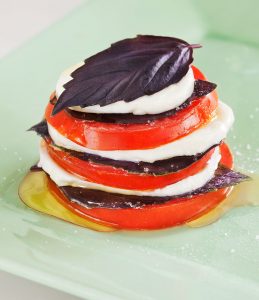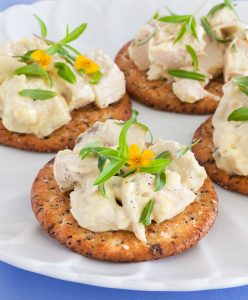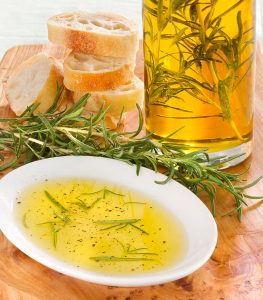

A stronger-flavoured basil than sweet basil, Thai Basil also has a hint of licorice flavour. The leaves, which are about half the size of sweet basil, have purple stems and make pretty garnishes. They are added by the handful to Thai cusine and also dishes of Southeast Asia. Its popularity has grown with the discovery of these delicious dishes from those countries. A slightly smaller plant than Sweet Basil, it is perfectly suited for containers.
- Type warm season annual
- Planting time after last spring frost
- Features aromatic, pointed green leaves
- Light full sun
- Soil light, well drained but moist
- Spacing 12-18 inches
- Plant size: 1 to 2 feet tall and wide
- Garden use containers, herb beds, flower beds
- Culinary use Asian and Thai dishes
Light requirements Full sun is ideal, but plants can grow in part shade.
Planting Space 8 to 18 inches apart, depending on type. (Read the stick tag that comes with the plant for specific spacing recommendations.)
Soil requirements Plants grow best in rich, moist but well-drained soil with a pH of 6.0 to 7.0. Work organic matter into soil before planting to add fertility and improve moisture retention. In containers, use premium quality potting soil.
Water requirements Keep soil consistently moist through the growing season. Add a mulch layer to slow water evaporation from soil. In containers, water whenever the top inch of soil is dry.
Frost-fighting plan Basil is very frost-tender and damaged by temperatures below 40º F. Use a frost blanket to protect newly planted seedlings from late spring frosts or prolong the fall growing season.
Common issues Pinch flower buds to keep plants from bolting. Once flowers form, leaf flavor changes. Pests to watch out for: aphids, slugs, Japanese beetles, and earwigs. Fungal diseases sometimes occur in humid climates, and root rot is common in poorly drained soil.
Growing tips Pinch or prune basil plants as they grow to promote branching and bushiness. Never cut into the woody parts of a stem; plants won’t resprout.
Harvesting Pick leaves at any point in the growing season. Choose individual leaves, or snip leafy stems to the length you desire.
Storage Cut basil stems and place in water like a fresh bouquet. They’ll last for weeks, provided you remove any leaves below the water line and change water regularly. Never place basil in the refrigerator; the cold air damages leaves. Preserve basil by freezing or in herbal vinegars.



